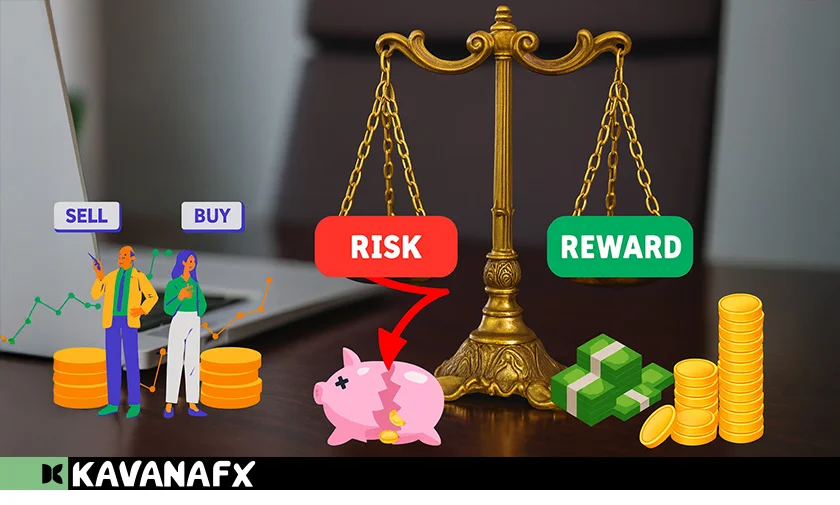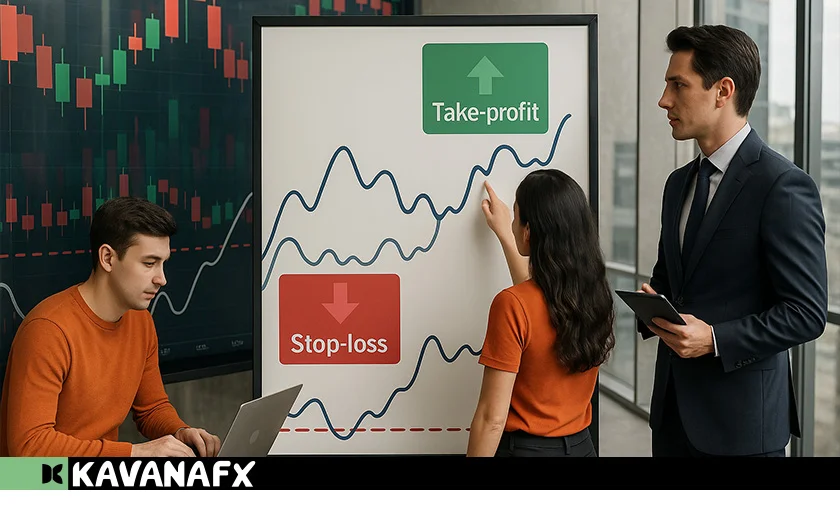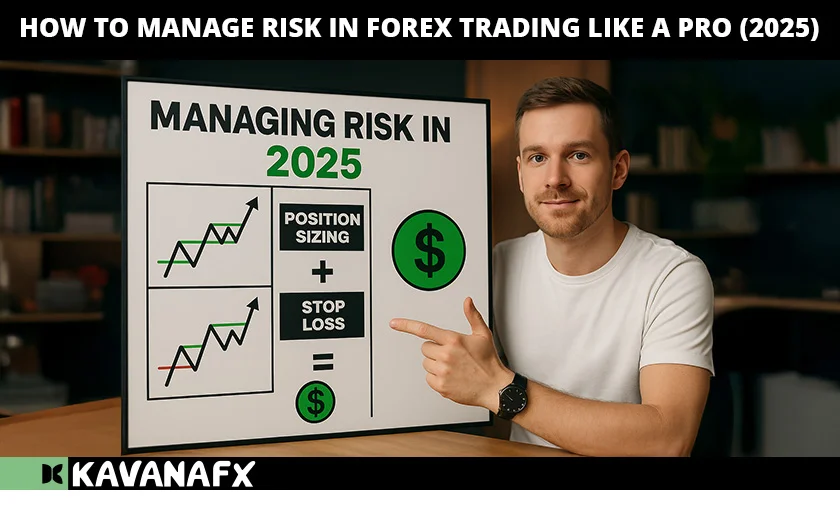Most new traders dive into forex thinking it’s all about spotting entries and predicting the market. But seasoned professionals know the truth:
“Trading is not about being right — it’s about managing your risk when you’re wrong.”
The forex market is highly liquid and volatile, and while that presents opportunity, it also opens the door to major losses if you’re unprotected.
That’s why risk management — not strategy, not prediction — is what separates professionals from gamblers. In this guide, we’ll help you manage risk like a pro by walking you through key techniques like capital allocation, position sizing, stop-loss placement, take profit strategies, and more.
1. The Importance of Capital Management in Forex
Capital management, or money management, is the system that protects your trading capital from being wiped out due to a string of losses or emotional decision-making.
Why it matters:
• Even winning strategies can lose without proper risk control.
• Emotions (greed, fear) can be minimized when you have rules.
• Staying in the game is more important than any single trade.
Golden Rule: Never risk more than 1–2% of your total capital on a single trade.
Let’s say your trading account is $5,000:
• Risk 1% → $50 max loss per trade
• Risk 2% → $100 max loss per trade
That means no matter how strong a signal looks, you don’t allow yourself to lose more than that threshold.
Why? Because your trading edge works over time — not one big win.
2. Risk-to-Reward (R/R) Ratio: The Trader’s Compass

The Risk-to-Reward Ratio (R/R) shows how much you risk to make a potential reward.
How It Works:
• If you risk 50 pips to make 100 pips, your R/R ratio = 1:2
• If you risk 100 pips to make 100 pips → R/R = 1:1
Ideal R/R Ratio:
Professional traders often use a minimum of 1:2 or higher. This means for every $1 risked, you aim to earn $2.
Even if you’re wrong 50% of the time, you can still be profitable over time:
Accuracy R/R Ratio Result
50% 1:2 . Profitable
40% 1:3 . Profitable
60% 1:1 . Break-even / Slight gain
Tip: Use this ratio as your filter. If the trade setup doesn’t offer at least a 1:2 ratio, skip it.
3. How to Calculate Trade Size (Lot Volume)
Knowing your transaction volume is critical. Too big, and you risk blowing your account. Too small, and your profits are negligible.
Formula to Calculate Position Size:
| Position Size = (Account Size × Risk %) / Stop Loss (in pips) × Pip Value |
Let’s break it down with an example:
• Account: $10,000
• Risk: 2% = $200
• Stop loss: 50 pips
• Pip value: $10 (for 1 standard lot on most USD pairs)
Lot Size = $200 / (50 × $10) = 0.4 lots
So, you should trade 0.4 lots to risk 2% on this trade.
You can also use lot size calculators provided by brokers or sites like MyFxBook or Babypips.
4. Stop-Loss Orders: Your Safety Net
What is a Stop Loss?
A stop loss is an automatic order to close your trade at a specific loss level. It protects you from large, emotional losses.
How to Determine Stop-Loss Placement:
1. Technical Stop: Place below/above support/resistance, trendlines, or recent swing highs/lows.
2. Volatility-Based Stop: Use tools like ATR (Average True Range) to gauge how far price might move.
3. Fixed Stop: Use a standard pip count (e.g., 30 or 50 pips) — not ideal unless based on a tested system.
Don’t Move Your Stop Loss
• Many traders widen their stop-loss when price approaches it. This destroys risk management.
• Place it. Stick to it.
Remember: Losing trades are normal. Protecting capital is the priority.
5. Take-Profit Targets: Locking in Gains
A Take-Profit (TP) order closes your trade once a set profit level is reached.

Ways to Set TP:
• Risk/Reward Rule: Use your predefined R/R ratio (e.g., if risking 50 pips, aim for 100).
• Key Levels: Previous support/resistance zones or pivot points.
• Trailing TP: Some traders use a trailing stop to follow the trend and maximize gains.
Pro Tip: Always set both Stop-Loss and Take-Profit before entering a trade.
6. Use of Leverage: With Great Power Comes Risk
Leverage allows you to control large positions with a small amount of capital — but it also amplifies your risk.
Example:
• 100:1 leverage means $1,000 controls a $100,000 trade.
• A 1% move = $1,000 gain/loss.
The Problem:
• Overleveraging can wipe out your account in minutes.
• Especially dangerous in high volatility situations (news events, low liquidity).
Suggested Leverage for Beginners: 1:10 or lower
Use leverage cautiously and always calculate your position size based on risk, not greed.
7. Psychology + Risk Management = Real Edge
Even with the best technical setup, emotions can ruin trades. Greed causes overtrading. Fear causes premature exits.
Practical Psychology Tips:
• Accept Losses as Normal: Don’t revenge trade.
• Have a Risk Cap per Day: If you lose 3 trades in a row, walk away.
• Keep a Trading Journal: Record each trade’s logic, risk/reward, and emotional state.
The best traders treat risk like a professional investor, not a gambler.
8. Pro Tools for Risk Management
Stop Loss – Limits loss on a trade
Take Profit – Locks in profit automatically
Risk % – Controls how much of your capital is exposed
Lot Size Calculator – Ensures correct position sizing
Trading Journal – Analyzes patterns, mistakes, wins
MT4/MT5 EAs – Automate SL/TP, trailing stops
Risk Calculator Apps – On mobile or browser, helps plan trades
Example of a Full Risk-Controlled Trade
Let’s say:
• Account: $5,000
• Risk: 1% = $50
• Stop Loss: 25 pips
• Pair: EUR/USD
• Pip value for 1 lot = $10
Calculated Position Size:
| Lot size = $50 / (25 × $10) = 0.2 lots |
Trade Setup:
• Entry: 1.1100
• SL: 1.1075
• TP: 1.1150
• R/R = 1:2
You’ve defined your entry, exit, and risk clearly. This is trading like a pro.
FAQ: Forex Risk Management
1. What is the safest amount to risk per trade in forex?
Most professional traders risk no more than 1–2% of their capital per trade. It allows for drawdowns without blowing up the account.
2. Can I trade without using a stop-loss?
Technically yes, but it’s extremely risky. One bad trade can wipe out your account. Using a stop-loss is essential in risk management.
3. How do I calculate the correct lot size?
Use this formula:
Position Size = (Risk $) / (Stop Loss in Pips × Pip Value)
Or use online calculators provided by your broker.
4. What’s a good Risk/Reward ratio to follow?
A minimum of 1:2 is recommended. This means you aim to make twice as much as you risk on each trade.
5. Does using lower leverage help reduce risk?
Yes. Lower leverage gives you more breathing room and reduces your chances of large, fast losses. Start with low or no leverage until you’re consistently profitable.
Final Thoughts: Master Risk, Master Trading
Forex trading isn’t about never losing — it’s about controlling losses and letting profits grow. Risk management is your real edge in the market.
Before you worry about strategy, fancy indicators, or economic calendars, make sure your risk plan is solid.
